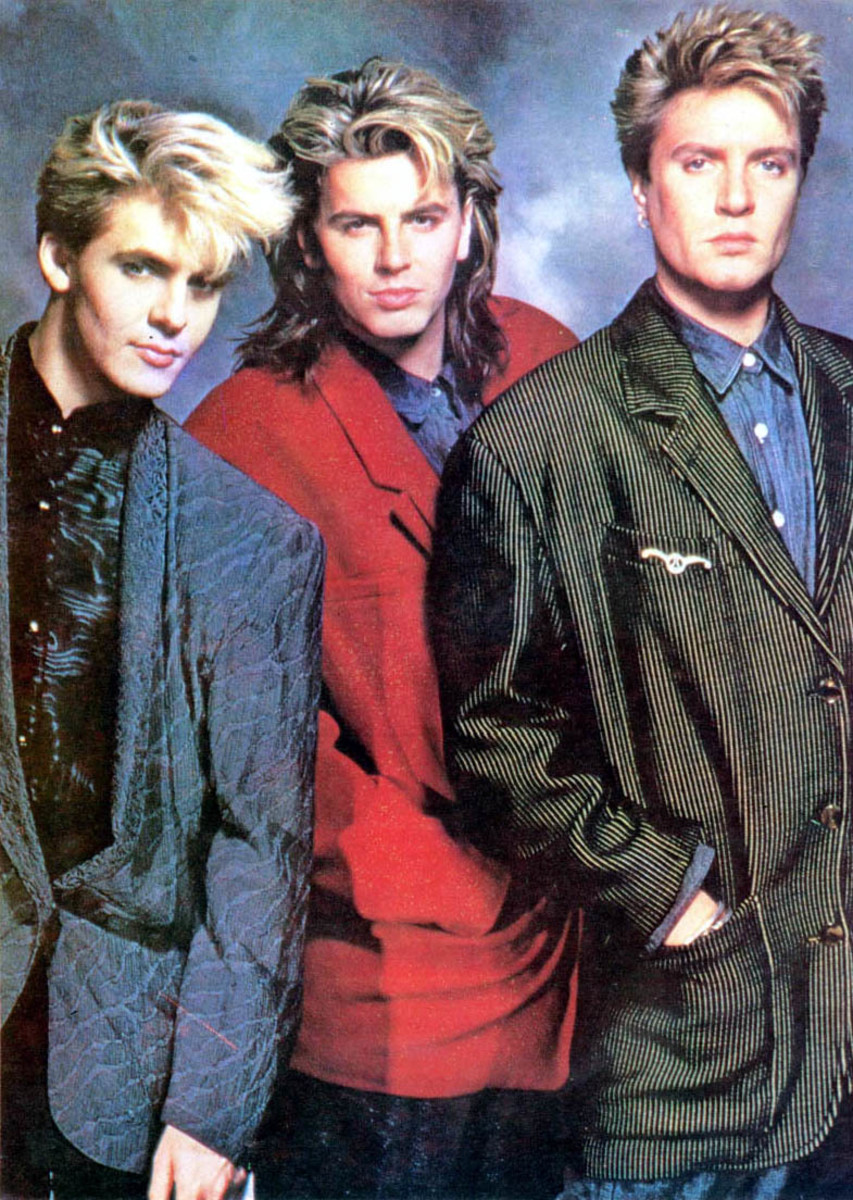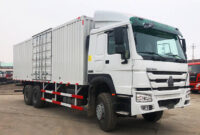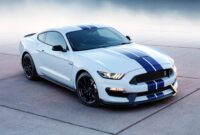80s Ford Trucks For Sale: A Comprehensive Buyer’s Guide pickup.truckstrend.com
The 1980s. A decade of big hair, synth-pop, and a distinct automotive aesthetic that still captivates enthusiasts today. Among the most enduring symbols of this era are the Ford trucks, particularly the F-Series, Bronco, and Ranger. These vehicles weren’t just modes of transportation; they were workhorses, family haulers, and symbols of rugged American capability. Today, an 80s Ford truck isn’t merely a used vehicle; it’s a piece of automotive history, a customizable canvas, and for many, a nostalgic journey back to a simpler time.
For sale listings featuring these venerable machines are abundant, ranging from forgotten farm trucks to meticulously restored showpieces. But navigating the market for an 80s Ford truck requires more than just a love for vintage steel. This comprehensive guide will delve into what makes these trucks special, what to look for when buying, where to find them, and what to expect in terms of ownership and maintenance. If you’re considering bringing an icon from the ’80s home, read on.
80s Ford Trucks For Sale: A Comprehensive Buyer’s Guide
The Enduring Appeal of 80s Ford Trucks
Why do these boxy, no-nonsense trucks continue to command attention and a dedicated following? Several factors contribute to their lasting appeal:
- Nostalgia and Classic Styling: The distinctive "bullnose" (1980-1986) and "bricknose" (1987-1991) designs are instantly recognizable. Their squared-off lines, prominent grilles, and utilitarian aesthetics evoke a strong sense of nostalgia for a bygone era of American manufacturing.
- Rugged Durability: Built with simpler mechanics and robust components, these trucks were designed to last. Many original engines and transmissions are still going strong, a testament to Ford’s engineering of the period.
- Mechanical Simplicity: Unlike modern vehicles laden with complex electronics, 80s Ford trucks are relatively straightforward to work on. This makes them ideal for DIY enthusiasts and helps keep maintenance costs down.
- Affordability: While pristine examples can fetch a premium, many driver-quality or project trucks remain surprisingly affordable, offering excellent value for money.
- Customization Potential: The aftermarket support for 80s Fords is immense. From suspension lifts and engine swaps to interior upgrades and paint jobs, these trucks are popular platforms for personalization, allowing owners to create a unique vehicle that reflects their style.
- Utility: At their core, these are trucks. They excel at hauling, towing, and tackling rough terrain, making them practical choices even today for work or recreation.

Key Models to Look For
The 1980s saw Ford produce a diverse range of trucks, each with its own characteristics and fan base.
Ford F-Series (F-150, F-250, F-350)

The undisputed king of the Ford truck lineup, the F-Series from the 80s is what most people picture when they think of these vehicles.
- 7th Generation (1980-1986 "Bullnose"): Characterized by its more rounded front end compared to its predecessor, this generation offered a wide array of powertrains and configurations. Common engines included the venerable 300 cubic inch (4.9L) inline-six, known for its bulletproof reliability and torque, and various V8s like the 302 (5.0L), 351W (5.8L), and the powerful 460 (7.5L). Diesel options included the 6.9L IDI (Indirect Injection) V8, later upgraded to 7.3L.
- 8th Generation (1987-1991 "Bricknose"): This generation introduced a more aerodynamic and squared-off front fascia, earning it the "bricknose" moniker. It also saw the gradual introduction of electronic fuel injection (EFI) across most engine lines, improving fuel efficiency and cold starting. The 300 I6, 302 V8, 351W V8, and 460 V8 continued as popular choices, along with the 7.3L IDI diesel.

Configurations: F-Series trucks were available in Regular Cab, SuperCab (extended cab), and Crew Cab (four-door) configurations, with short bed or long bed options. Trim levels ranged from the basic Custom and XL to the more upscale XLT Lariat, offering features like power windows, air conditioning, and plush interiors.
Ford Bronco (Full-Size)
The iconic full-size SUV based on the F-150 chassis, the Bronco of the 80s is highly sought after, especially for its removable fiberglass hardtop.
- 3rd Generation (1980-1986): Sharing much of its styling and mechanicals with the "bullnose" F-Series, this Bronco offered a compelling blend of utility, off-road capability, and a fun open-air experience.
- 4th Generation (1987-1991): Mirroring the "bricknose" F-Series, this generation brought the updated styling and EFI engines to the Bronco. Its ruggedness and unique design make it a favorite for restoration and custom builds.
Broncos typically came with the same range of V8 engines as the F-150 (302, 351W, 460) and were almost exclusively 4×4.
Ford Ranger
Ford’s compact pickup truck, introduced in 1983, quickly became a popular alternative to its larger F-Series siblings.
- 1st Generation (1983-1988): The Ranger offered better fuel economy and maneuverability than the F-Series while still providing respectable hauling capabilities. Early engine options included the 2.3L four-cylinder and a 2.8L V6.
- 1.5 Generation (1989-1992): A mid-cycle refresh brought a new front fascia and interior updates. Engine options expanded to include a 2.9L V6 and later a 4.0L V6, giving the Ranger more power. Rangers are great for those seeking a lighter-duty truck with vintage appeal.
What to Look For When Buying (Inspection Guide)
Buying an 80s Ford truck requires a thorough inspection. These vehicles are old, and even the most well-maintained examples will have quirks.
- Rust: This is the biggest enemy of 80s Ford trucks. Inspect the frame rails (especially near the rear wheels and body mounts), cab corners, rocker panels, floorboards, wheel wells, bed supports, and tailgate. Surface rust is common and manageable, but extensive rot is a red flag, indicating costly repairs or structural compromise.
- Engine & Transmission:
- Cold Start: Listen for excessive smoke (blue for oil, white for coolant, black for rich fuel mix), knocking, or ticking noises.
- Fluids: Check oil, transmission fluid, coolant, and brake fluid levels and condition. Look for leaks.
- Test Drive: Does the engine accelerate smoothly? Are there any misfires or hesitations? For automatics, check for smooth, timely shifts without slipping. For manuals, ensure the clutch engages properly and gears shift without grinding.
- Brakes & Steering:
- Test Drive: Does the truck pull to one side under braking? Is the pedal firm or spongy? Listen for squealing or grinding.
- Steering: Check for excessive play in the steering wheel. Listen for groaning noises when turning at low speeds (power steering pump).
- Suspension: Look for sagging in the front or rear, especially if it’s a heavily used work truck. Bounce each corner to check for worn shocks (excessive bouncing indicates bad shocks). Inspect leaf springs and coil springs for cracks or breaks.
- Interior: Check the condition of seats (tears, foam breakdown), dashboard (cracks are common), headliner, and door panels. Test all electrical components: lights (interior and exterior), wipers, horn, radio, power windows/locks (if equipped), and importantly, the heater and air conditioning.
- Documentation: Ask for service records, original owner’s manuals, and verify the title is clean and matches the VIN. A history of maintenance is a strong positive.
Where to Find 80s Ford Trucks For Sale
The market for these trucks is robust, and there are several avenues to explore:
- Online Marketplaces:
- Craigslist & Facebook Marketplace: Excellent sources for local listings, often from private sellers. Be prepared to sift through many listings and act quickly on good deals.
- eBay Motors: Good for a wider geographical search, often with more detailed listings and sometimes vehicles offered by dealers.
- Classic Car/Truck Specific Sites: Websites like Hemmings, ClassicCars.com, and Bring a Trailer (for higher-end examples) specialize in vintage vehicles.
- Local Dealerships: Some used car dealerships specialize in older trucks or have a rotating inventory of classic vehicles.
- Auctions: Local auto auctions can be a gamble but sometimes yield great deals on project trucks. Higher-profile auctions (e.g., Mecum, Barrett-Jackson) will feature more premium, restored examples.
- Word-of-Mouth & Car Shows: Networking with local classic car clubs or attending car shows can reveal hidden gems.
Common Issues and Solutions
While durable, 80s Ford trucks are not immune to age-related issues.
- Rust: As mentioned, it’s prevalent. Solutions range from patching small spots to full panel replacement and professional rust repair. Prevention (undercoating, regular cleaning) is key once purchased.
- Fuel System (Carbureted vs. EFI): Early 80s trucks with carburetors can suffer from issues like rough idle, stalling, or hard starting due to worn components or clogged jets. EFI systems (later 80s) are generally more reliable but can have issues with fuel pumps, sensors, or wiring. Many enthusiasts convert carbureted engines to modern EFI for improved performance and reliability.
- Electrical Gremlins: Aging wiring, corroded grounds, and worn switches can lead to intermittent electrical problems. A good wiring diagram and patience are your best tools.
- Vacuum Leaks: Common in older engines, vacuum leaks can cause rough idling, poor performance, and reduced fuel economy.
- Parts Availability: For common wear items (brakes, suspension components, engine parts), parts are generally readily available from auto parts stores or online. Specific trim pieces, unique interior components, or rust-free body panels can be harder to source, sometimes requiring salvage yard hunts or reproduction parts.
- Modifications & Upgrades: Many 80s Ford trucks have been modified over the years. Common upgrades include suspension lifts, larger tires, engine performance enhancements (exhaust, intake), and stereo system upgrades. Be aware that some modifications can impact reliability or drivability if not done correctly.
Owning and Maintaining Your 80s Ford Truck
Owning an 80s Ford truck is a rewarding experience, but it comes with responsibilities.
- Regular Maintenance: Adhere to a strict maintenance schedule for oil changes, fluid checks, filter replacements, and lubrication. These simple tasks will significantly extend the life of your truck.
- DIY Potential: Thanks to their simpler design, many routine maintenance and even some repair tasks can be tackled by a home mechanic with basic tools and a good repair manual.
- Community Support: The internet is a treasure trove of information. Forums, Facebook groups, and YouTube channels dedicated to 80s Ford trucks offer a wealth of knowledge, troubleshooting tips, and a supportive community.
- Insurance: Consider classic car insurance if your truck is primarily a recreational vehicle or show truck, as it can offer better coverage and rates than standard auto insurance.
Practical Advice and Actionable Insights
- Define Your Purpose and Budget: Are you looking for a daily driver, a weekend cruiser, an off-road beast, or a full restoration project? Your purpose will dictate your budget and the condition of the truck you should target. Be realistic about potential repair costs.
- Get a Pre-Purchase Inspection (PPI): If you’re not mechanically inclined, or even if you are, pay a trusted mechanic (especially one familiar with older vehicles) to perform a thorough PPI. It’s a small investment that can save you thousands down the road.
- Don’t Rush: There are many 80s Ford trucks for sale. Take your time, look at several options, and don’t feel pressured to buy the first one you see.
- Factor in Hidden Costs: Beyond the purchase price, budget for immediate maintenance (fluids, filters, tires), potential repairs, registration, and insurance.
Estimated Price Table for 80s Ford Trucks (For Sale)
Note: Prices are highly variable based on condition, mileage, engine, transmission, options, location, and market demand. These are general estimates for trucks in the continental US.
| Model | Year Range | Condition: Project/Rough | Condition: Driver Quality | Condition: Excellent/Restored |
|---|---|---|---|---|
| Ford F-150 | 1980-1991 | $1,500 – $5,000 | $5,000 – $15,000 | $15,000 – $40,000+ |
| Ford F-250/F-350 | 1980-1991 | $2,000 – $7,000 | $6,000 – $18,000 | $18,000 – $50,000+ |
| Ford Bronco | 1980-1991 | $3,000 – $8,000 | $8,000 – $25,000 | $25,000 – $60,000+ |
| Ford Ranger | 1983-1991 | $1,000 – $4,000 | $4,000 – $10,000 | $10,000 – $25,000+ |
- Project/Rough: Needs significant mechanical, body, or interior work. May not be running or roadworthy.
- Driver Quality: Runs and drives reliably, may have cosmetic flaws, minor mechanical issues that don’t prevent use.
- Excellent/Restored: Near-mint condition, professionally restored, or very well-preserved original. Little to no work needed.
Frequently Asked Questions (FAQ)
Q: Are 80s Ford trucks reliable?
A: Yes, generally. While they are old and will require maintenance, their simpler mechanical design makes them inherently robust. The 300 I6 engine, in particular, is legendary for its reliability. Regular maintenance is key to keeping them dependable.
Q: What’s the best engine for an 80s Ford truck?
A: It depends on your needs. The 300 (4.9L) inline-six is highly recommended for its incredible durability, torque, and ease of maintenance. For more power, the 351W (5.8L) V8 offers a good balance, while the 460 (7.5L) V8 is a powerhouse for heavy hauling. The 7.3L IDI diesel is also a strong, long-lasting option for heavy-duty use.
Q: Are parts still available for 80s Ford trucks?
A: Yes, for most common wear items and mechanical components, parts are widely available through auto parts stores and online retailers. Reproduction body panels and unique trim pieces can sometimes be harder to find but are increasingly available from specialized suppliers.
Q: Can I use an 80s Ford truck as a daily driver?
A: Absolutely. Many people do. However, be prepared for lower fuel economy compared to modern trucks and understand that an older vehicle will require more diligent maintenance and occasional repairs. Reliability depends heavily on the specific truck’s condition and maintenance history.
Q: What’s the difference between "bullnose" and "bricknose" 80s Ford trucks?
A: "Bullnose" refers to the 7th generation F-Series (1980-1986) with a slightly more rounded, prominent front grille and headlight design. "Bricknose" refers to the 8th generation (1987-1991), which received a facelift resulting in a more aerodynamic, squared-off, and flatter front end, resembling a brick.
Q: Are they good for off-roading?
A: Yes, especially the 4×4 F-Series and Broncos. Their solid axles, robust frames, and available powerful engines make them excellent platforms for off-road adventures. Many are already lifted and modified for enhanced capability.
Conclusion
The allure of 80s Ford trucks for sale is undeniable. They represent an era of straightforward engineering, rugged design, and a connection to American automotive heritage. Whether you’re seeking a nostalgic daily driver, a capable workhorse, or a blank canvas for a custom build, these trucks offer immense value and character. By understanding their unique characteristics, knowing what to look for during inspection, and being prepared for the joys and responsibilities of ownership, you can confidently navigate the market and find the perfect 80s Ford truck to call your own. Embrace the past, drive the legend, and enjoy the journey that only an 80s Ford can provide.



